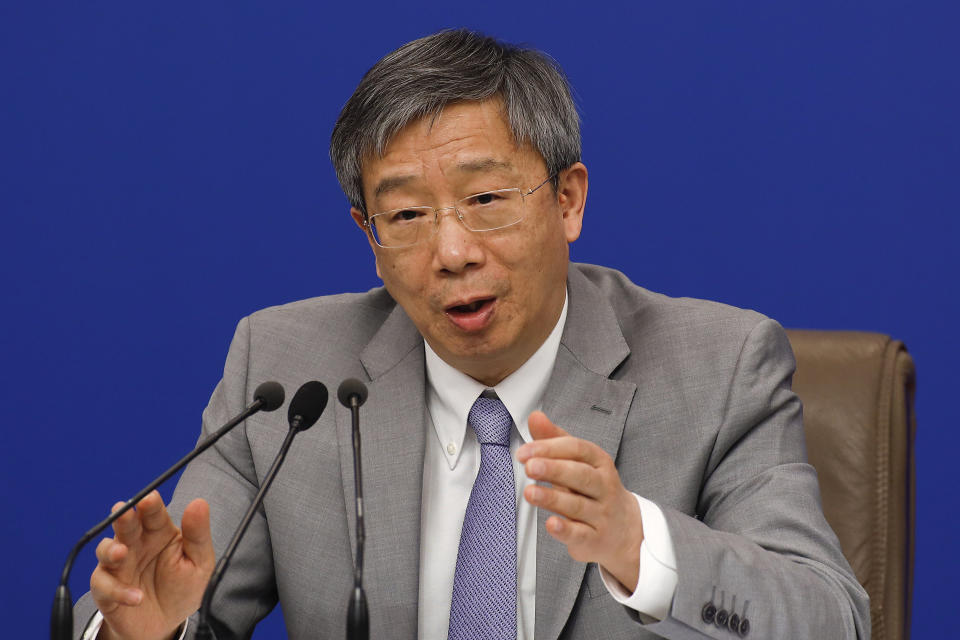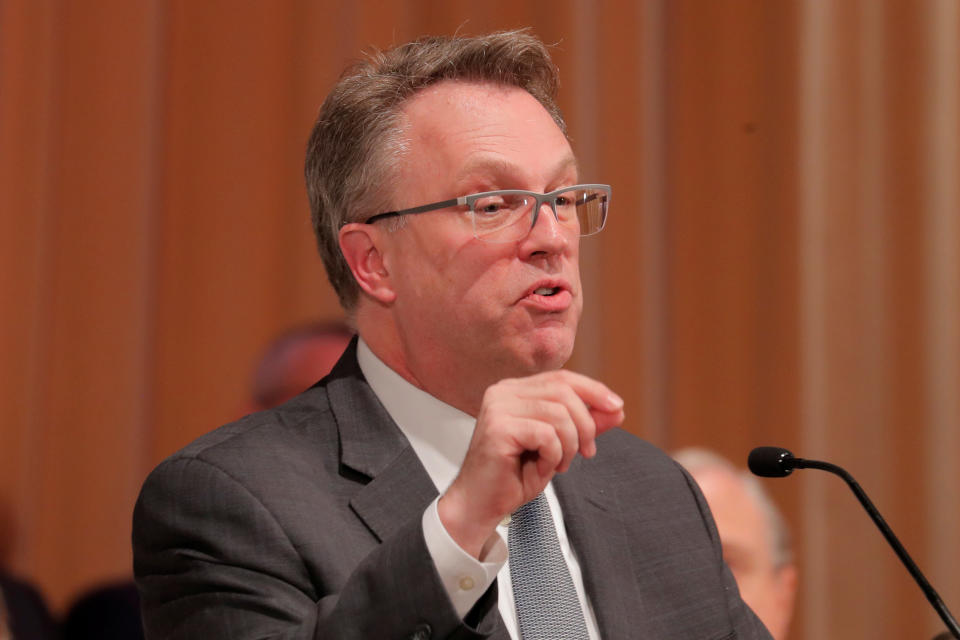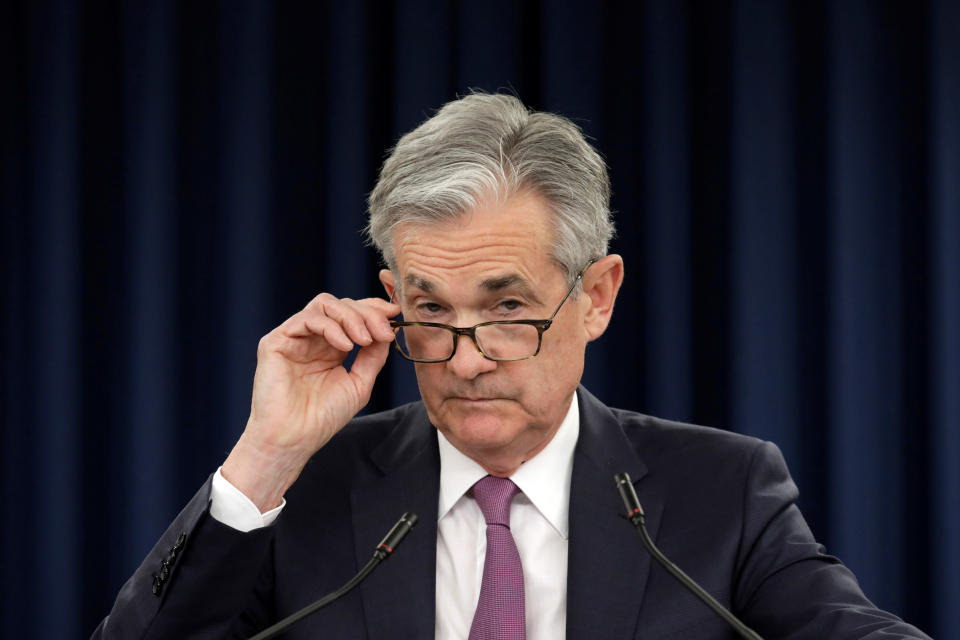Trump to Fed: Cut rates and help us win the trade war
President Donald Trump has a clear message for the Federal Reserve: cut rates and help him win the trade war with China.
On Tuesday morning, Trump tweeted that he expects China to cut its interest rates to make up for the impact of U.S. tariffs, adding that if the Fed ever did a “‘match,’ it would be game over, we win!”
China will be pumping money into their system and probably reducing interest rates, as always, in order to make up for the business they are, and will be, losing. If the Federal Reserve ever did a “match,” it would be game over, we win! In any event, China wants a deal!
— Donald J. Trump (@realDonaldTrump) May 14, 2019
The administration raised its tariffs on $200 billion of Chinese goods from 10% to 25% on Friday. On Monday, China responded by announcing a tariff as high as 25% on a portion of $60 billion worth of U.S. goods starting June 1. Now, the U.S. is threatening an extension of the 25% tariffs on a new $300 billion of Chinese goods.
The U.S. hopes that it can wrangle concessions over forced technology transfers and intellectual property protections from the Chinese, but Trump may be fishing for something else: lower and accommodative rates from the Fed. For months, Trump has called on the Fed to cut rates by as much as 100 basis points.

China’s central bank has been easing financial conditions amid worries over a slowdown, and recently lowered reserve requirement ratios for some national banks in an effort to stimulate more lending. In the U.S. meanwhile, the Fed remains on pause with interest rates in a target range of 2.25% to 2.5% after it raised rates four times in 2018.
Trump’s tweet Tuesday morning raises questions about whether a U.S. slowdown, triggered by the tariffs, would push the Fed to step in by lowering interest rates.
Fed officials open to a rate cut
Not many Fed officials have spoken since the tariffs increased, but Boston Fed President Eric Rosengren and New York Fed President John Williams said they see downside risks to trade concerns. Both are voting members of this year’s Federal Open Market Committee, which sets rates.

"If the impact of the tariffs — and whatever financial market reaction to those tariffs is — causes more of a slowdown, then we do have the tools available to us, including lower interest rates, not that I'm necessarily expecting this will generate the need to do that," Rosengren told Reuters May 13.
Williams told Bloomberg on Tuesday that the tariffs would probably have “some negative effects on growth,” cautioning that he sees the economy as “well-positioned to deal with whatever events could happen in the future.”
Another factor to consider: inflation.
Although the Fed has struggled to get inflation to its 2% target, higher tariffs could raise prices for U.S. consumers to levels that would nudge measures of personal consumption expenditures up.
Williams said inflation has already seen a “little boost” from the existing tariffs and would expect a “bigger” effect from expanded tariffs.
Goldman Sachs wrote May 14 that the existing tariffs have increased core PCE — which strips out food and energy prices — by 20 basis points. The most recent core personal consumption expenditures reading was 1.6%.

They estimate that the expanded tariffs would raise core PCE by 60 basis points and to 90 basis points if the administration were to also impose a 25% auto tariff.
Estimates are widely varied, however. A UBS note May 10 predicted that the expanded tariffs would boost core inflation by 21 basis points on top of the 7 basis points from the existing 25% tariffs.
“The effect is notable, but not huge,” UBS wrote.
Historically, higher inflation has been a case for the Fed to cut rates to hedge against runaway price increases. But Fed officials have insisted that they would need to see persistent changes in inflation or, more broadly, economic data, before changing its “patient” stance on rates.
That approach carries over to the tariffs, where policymakers may want to observe more permanent, underlying impacts to the U.S. economy before being convinced on a rate cut.
70% bet on rate cut by December
Still, markets are optimistic about the prospects of the Fed easing policy.
A week ago, before the U.S tariffs ratcheted up, Fed funds futures were pricing in a 58.4% chance that the central bank would cut rates at least once by its December policy-setting meeting.
As of Tuesday morning, those odds jumped to 70.3%.
Bank of America Merrill Lynch’s Global Fund Manager Survey for May suggested that the markets could push the Fed to cut if indicators flashed deep red. Respondents said the S&P 500 would have to fall as low as 2305 before the Fed would cut rates, about a 22% drop from the May 1 intraday high of 2954.13.
The last time the S&P was that low was in February 2017, amid uncertainty over the Fed’s efforts to normalize rates. Those were also the first few weeks of Trump’s presidency.
—
Brian Cheung is a reporter covering the banking industry and the intersection of finance and policy for Yahoo Finance. You can follow him on Twitter @bcheungz.
Inflation expectations dip as Fed grapples with stimulating prices
What a higher education tech company tells us about a tightening labor market
NY Fed: Yield curve shows 27% chance of recession in the next year
Economist John Taylor: Interest rates should go to around 3%
Powell on the economy: 'We don't see any evidence at all of overheating'
Congress may have accidentally freed nearly all banks from the Volcker Rule

